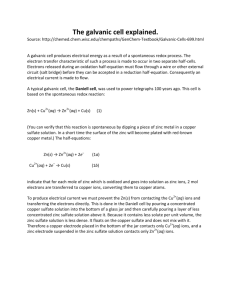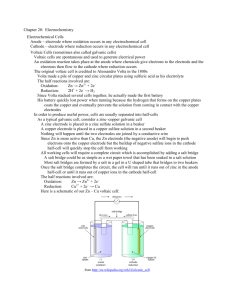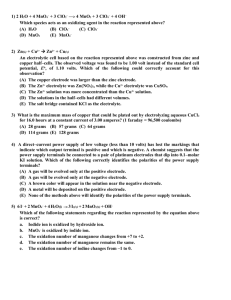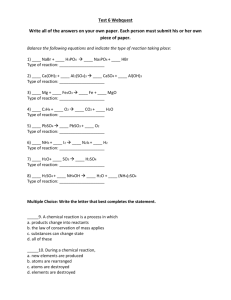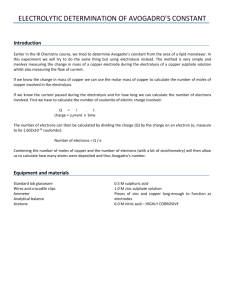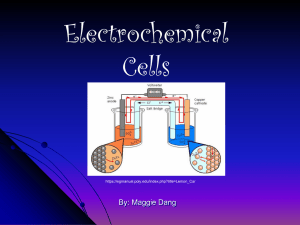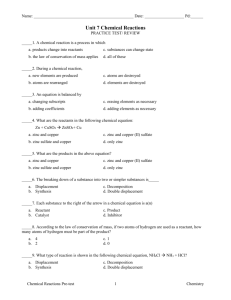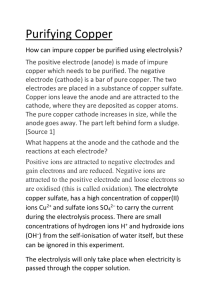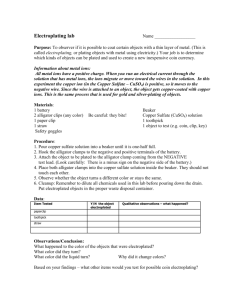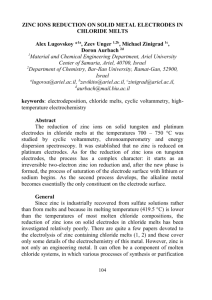Electrochemical Cells Reading (Heath)
advertisement
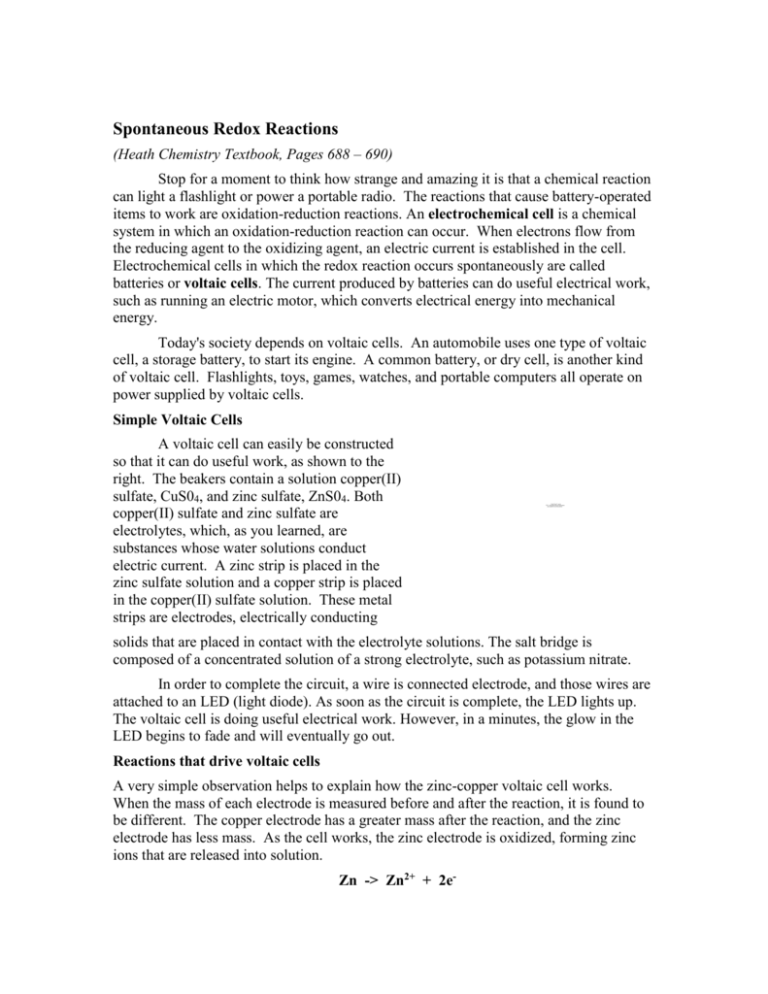
Spontaneous Redox Reactions (Heath Chemistry Textbook, Pages 688 – 690) Stop for a moment to think how strange and amazing it is that a chemical reaction can light a flashlight or power a portable radio. The reactions that cause battery-operated items to work are oxidation-reduction reactions. An electrochemical cell is a chemical system in which an oxidation-reduction reaction can occur. When electrons flow from the reducing agent to the oxidizing agent, an electric current is established in the cell. Electrochemical cells in which the redox reaction occurs spontaneously are called batteries or voltaic cells. The current produced by batteries can do useful electrical work, such as running an electric motor, which converts electrical energy into mechanical energy. Today's society depends on voltaic cells. An automobile uses one type of voltaic cell, a storage battery, to start its engine. A common battery, or dry cell, is another kind of voltaic cell. Flashlights, toys, games, watches, and portable computers all operate on power supplied by voltaic cells. Simple Voltaic Cells A voltaic cell can easily be constructed so that it can do useful work, as shown to the right. The beakers contain a solution copper(II) sulfate, CuS04, and zinc sulfate, ZnS04. Both copper(II) sulfate and zinc sulfate are electrolytes, which, as you learned, are substances whose water solutions conduct electric current. A zinc strip is placed in the zinc sulfate solution and a copper strip is placed in the copper(II) sulfate solution. These metal strips are electrodes, electrically conducting QuickT ime™ and a TI FF (Uncompressed) decompressor are needed to see this picture. solids that are placed in contact with the electrolyte solutions. The salt bridge is composed of a concentrated solution of a strong electrolyte, such as potassium nitrate. In order to complete the circuit, a wire is connected electrode, and those wires are attached to an LED (light diode). As soon as the circuit is complete, the LED lights up. The voltaic cell is doing useful electrical work. However, in a minutes, the glow in the LED begins to fade and will eventually go out. Reactions that drive voltaic cells A very simple observation helps to explain how the zinc-copper voltaic cell works. When the mass of each electrode is measured before and after the reaction, it is found to be different. The copper electrode has a greater mass after the reaction, and the zinc electrode has less mass. As the cell works, the zinc electrode is oxidized, forming zinc ions that are released into solution. Zn -> Zn2+ + 2e- The copper ions from the copper(II) sulfate solution are reduced at the copper electrode. Cu2+ + 2e- -> Cu The zinc electrode loses electrons, while the copper electrode gains electrons. The electrons flow through the wire from the zinc electrode to the copper electrode, as shown in Figure 20-5. Sufficient current flows to cause the LED to light up. What is the purpose of the salt bridge? If charges build up at either electrode, they will repel like charges, and current will stop flowing. The salt bridge is necessary to complete the circuit and prevent the buildup in each beaker of excess positive or negative charges. As positively charged zinc ions, Zn2+, are formed in the left cell compartment, negatively charged nitrate ions, NO3 -, are attracted from the salt bridge and enter the beaker. At the same time, positively charged copper(II) ions, Cu2+, are removed from the solution in the right cell compartment and potassium ions, K+, enter the beaker to take their place. The contents of both beakers remain electrically neutral, even as the concentrations of reactants and products change during the reaction. The current will continue to flow in the cell until the cell reaches equilibrium. Anodes and cathodes Zinc metal is more easily oxidized than copper metal. Copper ions are more easily reduced than zinc ions. The spontaneous reaction in the voltaic cell is expressed: the sum of the equations for the two half-reactions. Zn -> Zn2+ + 2eCu2+ + 2e- -> Cu Cu2+ + Zn -> Zn2+ + Cu In this example, the zinc electrode is called the anode, and the copper electrode is called the cathode. The anode is the site of oxidation, and the cathode is the site of reduction.
